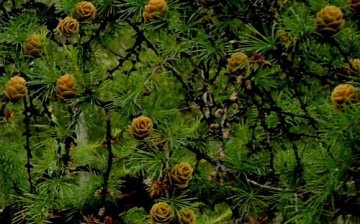Daurian larch and features of its cultivation
Larch trees are conifers, and they got their name because their needles fall off in autumn. Dahurian larch is widespread in the wild in Siberia and the Far East. This is a frost-hardy and rather unpretentious tree, but it is quite light-loving and requires a well-drained soil. If you are going to plant larch in a garden or on a personal plot, you should take into account that it grows very quickly and will become a large tree, which is cramped on 6 acres. These plants look great and are only appropriate for large areas.
Daurian larch perfectly tolerates transplantation; for the site, you can buy both annual seedlings and adult trees. But growing this tree from seeds is not easy on your own. Its seeds have a very poor germination capacity, and the seedlings are very sensitive to soil fertility and moisture. To obtain seeds, fresh light brown cones are collected after the needles have fallen off, and dried indoors until the scales open and the seeds fall out. The seeds are then placed in a paper bag and kept in the refrigerator until spring.
Before sowing, the seeds must be soaked in cold water, and when the earth warms up and passes the period of return frosts, they are sown to a depth of 3-5 mm. At greater depth, the seeds die, especially on heavy clay soils. Wait for seedlings in about a couple of weeks. Seedlings cannot tolerate even a slight darkening, so the plantings are carefully weeded. Watering is necessary regularly, but waterlogging of the soil should not be allowed. When transplanting a tree to a permanent place, the longest roots are pruned so that their length is about 15 cm so that the root system is more compact.



